Ever since I was a kid, I’ve wanted to build websites and apps. I dreamed of building the next big thing – the next Facebook - where you could connect people (hey, it was the 2000s!). I still have my pitch deck and mockups for Gradloop, my big idea ‘LinkedIn for College and High School Students to get internships. Thanks, Internet Wayback Machine!
But despite my enthusiasm, I never became fluent in coding - apologies to Mr. P, my high school AP Computer Science teacher. Sure, I could wrangle a bit of HTML to make my MySpace profile blingy but don’t ask me to build a full app or website from scratch. By the time I hit college with startup ideas burning a hole in my brain, I realized I’d need some actual coding skills to make them real. Thus began my era of technical co-founders. I was the "idea guy" and resident PowerPoint guru; I’d do the pitches, the business plans, the UX sketches – and I’d team up with a coder friend who knew how to make software. We built a couple of entrepreneurial ventures this way. For Gradloop, I even outsourced the web development to the Philippines. Years later, when I soft-launched Swarm Investing, I teamed up with my technical co-founder brother, and friends to bring the vision to life. And that kind of worked! We were able to test ideas, launch apps, get users, get to the top of ProductHunt, and build real businesses. Incidentally, Swarm morphed into Autopilot, with a different group of technical co-founders, and is now available in the App Store. Go download it!
But this mode of work wasn't easy for me or my cofounders. Basically, I’d say “Wouldn’t it be cool if...,” and my coding teammate would sigh, drink another coffee, and turn my wouldn’t-it-be-cool into a working prototype at 3 AM. I always felt a mix of pride and imposter syndrome about this. Pride because hey, I was bringing ideas to life! Impostor syndrome because without my co-founders, I was just a guy with doodles and grand plans. In the tech world, being just the idea guy always carried a whiff of inadequacy – a reality I painfully understood each time I had to beg a developer friend to help build yet another ‘game-changer’ app concept of mine.
The Idea Guy Era
Flash forward to a morning in 2025. I’m sipping coffee, doom-scrolling on X, when I see a post that makes me curious. A tech founder I admire, boldly claims, “The future belongs to idea guys...”
As someone who has lived his life as the unapologetic idea guy, I felt a strange mix of validation and skepticism. For years, the conventional wisdom in startups was that ideas are cheap, and execution is everything. If you were the non-technical founder, you were essentially the mascot while the coders did the real work. But Sahil’s changed that paradigm with AI development tools. He’s openly said he’s no longer hiring junior programmers because AI can handle a huge chunk of coding now. He described his company’s new simple development workflow and showed results that the AI developer is doing more code commits than all the humans on his team.
Essentially, the execution part (coding) is getting... automated. This was a radical reversal of the old order. Instead of the “idea person” being told to go learn to code or go home, now the idea was front and center, and the coding part could be fully handled by AI. The quote “The future belongs to the idea guy” started to make sense in this new context. It wasn’t that coding became worthless – it’s that coding became commoditized, something that could be delegated to machines. What really matters is having a vision of what to build. And that’s when it hit me: maybe I (and all the non-technical people like me) could finally build stuff on our own. Maybe we’ve arrived at a point where you can be an “Idea Person” and still ship a product. No computer science PhD, no Red Bull-fueled coding all-nighters, no begging your engineer buddy for “one more tweak, I swear.” I read there’s a whole new approach emerging for building apps, something affectionately dubbed “Vibe Coding.”
Vibe Coding
Vibe Coding is a term coined by Andrej Karpathy, AI extraordinaire and a co-founder of OpenAI. I’ll let him explain it…
…and I’ll try to interpret it. It’s a new way of creating software where you, the non-coder, focus on the vision, the idea – the vibe of what you want to make – and leverage a bunch of AI tools to handle the actual coding heavy lifting. It’s like bringing your idea to a potluck and having AI, no-code platforms, and other tools each brings a dish to complete the feast. Your job? Bringing the vibe and coordinating the party. Instead of writing Python or Swift or JavaScript line-by-line (and Googling Stack Overflow every 5 minutes for “how to center a div”), you do this.
Here’s me building a very basic version of Instagram in 60 seconds - yes the AI took my prompt, created the basic design, coded the files, and created something that I could’ve deployed to a real website.
I used Lovable.dev for this, but there are so many more tools that take a prompt and can create apps including Bolt, v0, Cursor, and Github Agent.

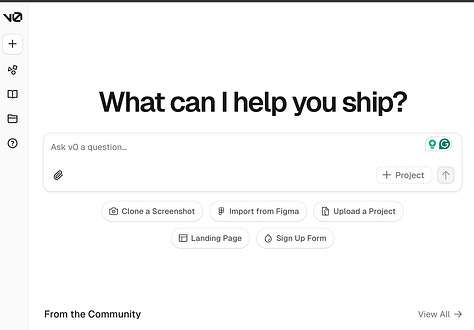

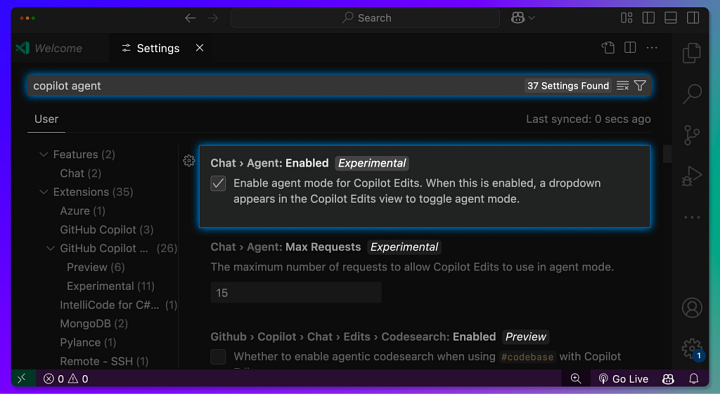
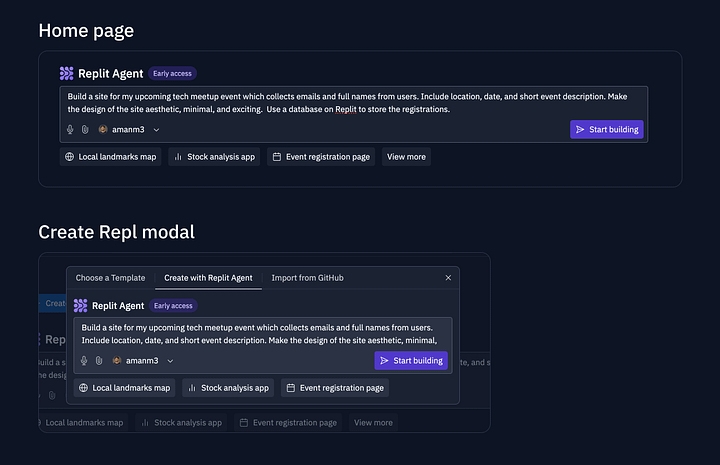
Now for the vibe piece of it, you can just talk to most of these coding agents - yes quite literally - and say things in your microphone like, “I don’t love the color scheme, make it more like Spotify’s green colors” or even “this doesn’t feel warm and friendly to me, make it more approachable” to which the agent will recode the app to better match your vibe. If you’re an idea guy who’s bugged your technical cofounder to fix the margins or change the layout, you know that this level of control and real-time responsiveness is truly a game-changer.
A Brief History Lesson On How Far We’ve Come
I think these AI tools speak for themselves but to truly appreciate it, its worth looking at how it used to work back in the day.
1950s: Coding meant feeding punch cards into massive computers. Only trained pros could handle it—non-coders? Impossible.
1970s–80s: High-level languages (Fortran, COBOL, C, BASIC) emerged, reducing complexity, though it stayed mainly an engineer’s domain.
1990s: Graphical interfaces and early no-code (Visual Basic, FrontPage) let more people build visually. It was still clunky but hinted at a code-optional future.
2010s: No-code/low-code took off. Platforms like Zapier, Bubble, and Webflow let anyone chain services and build sophisticated sites. Code was still king, but the gap was closing.
2025+: AI steps in. Vibe coding tools can generate entire projects from a prompt, marking a giant leap toward code-free creation.
But Can You Make Real Useful Apps and Websites That Are Real Revenue Generating Businesses With Only Vibe Coding?
The short answer is yes. There are a few people I’ve found who are at the forefront of figuring out how to best use these tools. Follow Riley Brown on X, though there are many others. Here’s Riley’s cheat sheet on how to get started.
…and if that’s a bit too advanced to follow, start with this fantastic tutorial from Riley on how to create a real working app, with a database and payments system hooked up, and deployed to your custom URL…all from scratch by simply talking to your computer in English.
..and the results have been incredible for entrepreneurs and the Vibe Coding Agent tools. Cursor is quite literally the fastest-ever-growing SaaS product.
What This Means for Innovation and Society
We’re at an exciting crossroad...and I’m personally excited to experience it. Vibe coding democratizes software creation, allowing anyone with a computer to bring ideas to life. Because coding is becoming more automated, diversity flourishes—educators, farmers, and artists can build solutions for their communities. Traditional developers remain crucial for complex tasks, but there's a shift: they focus on advanced challenges while routine coding is handled by AI or no-code platforms. With barriers lowered, rapid prototyping and faster innovation cycles emerge. Anyone can try building something; sure, many projects will fail, but that's how progress happens.
We’re at a moment when having a vision matters as much as coding skills once did. With the gap between idea and product shrinking, no-code and AI tools let founders, dreamers, and problem-solvers create with minimal friction. That doesn’t mean coding dies; it evolves. Skilled developers now serve as architects and mentors. For everyone else, if you have an idea, you can finally build it yourself—like the early days of tech, but supercharged by modern tools. So dream big, experiment, and find your inner Rick Rubin!





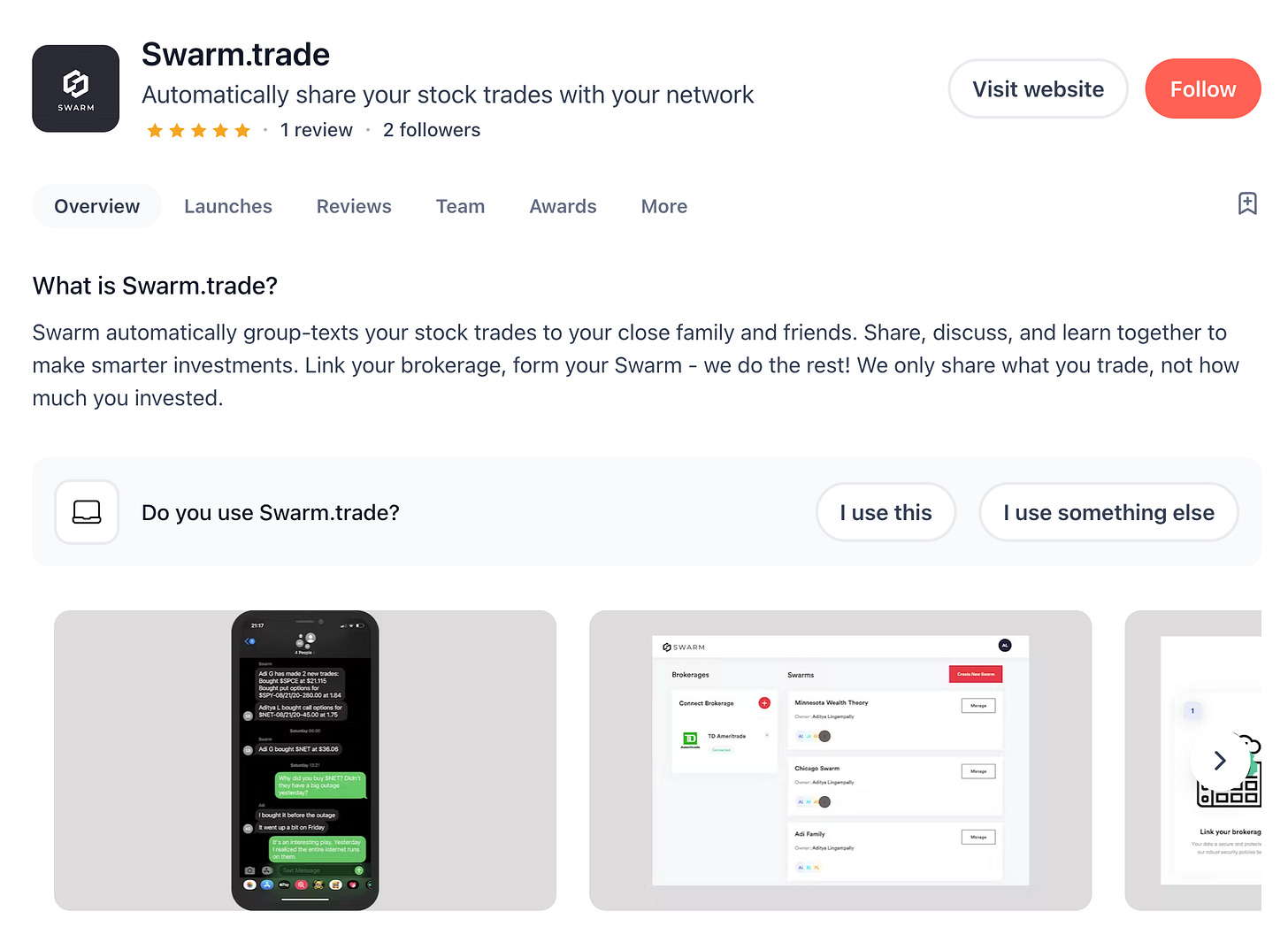

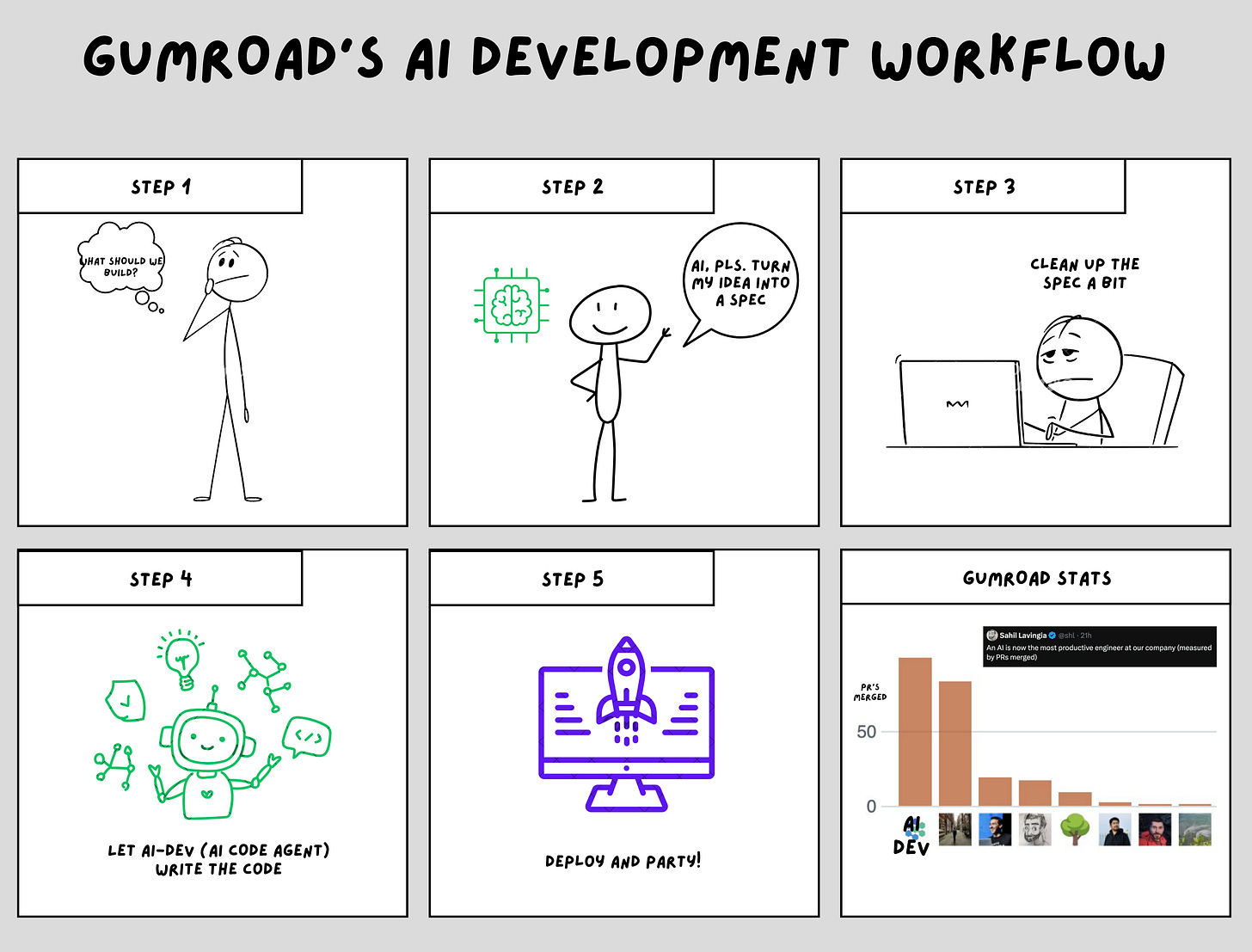
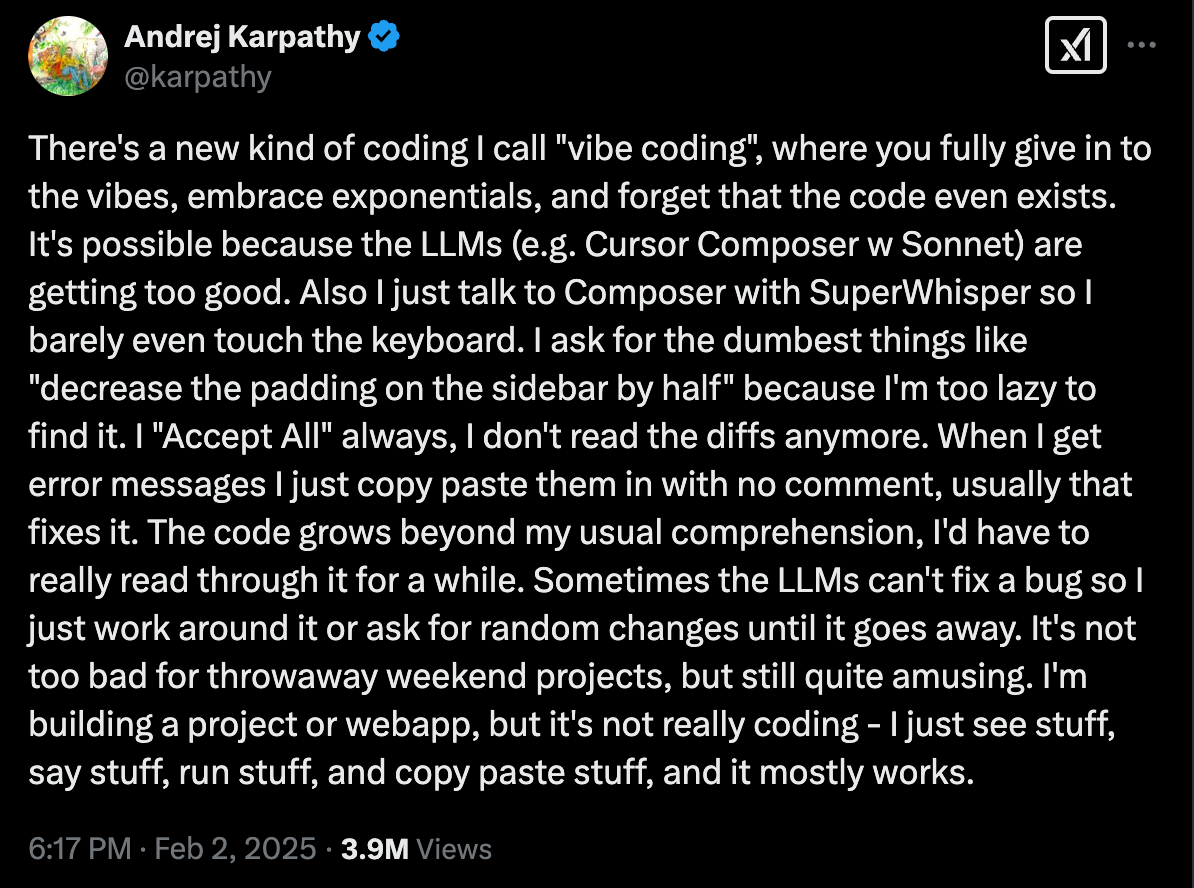
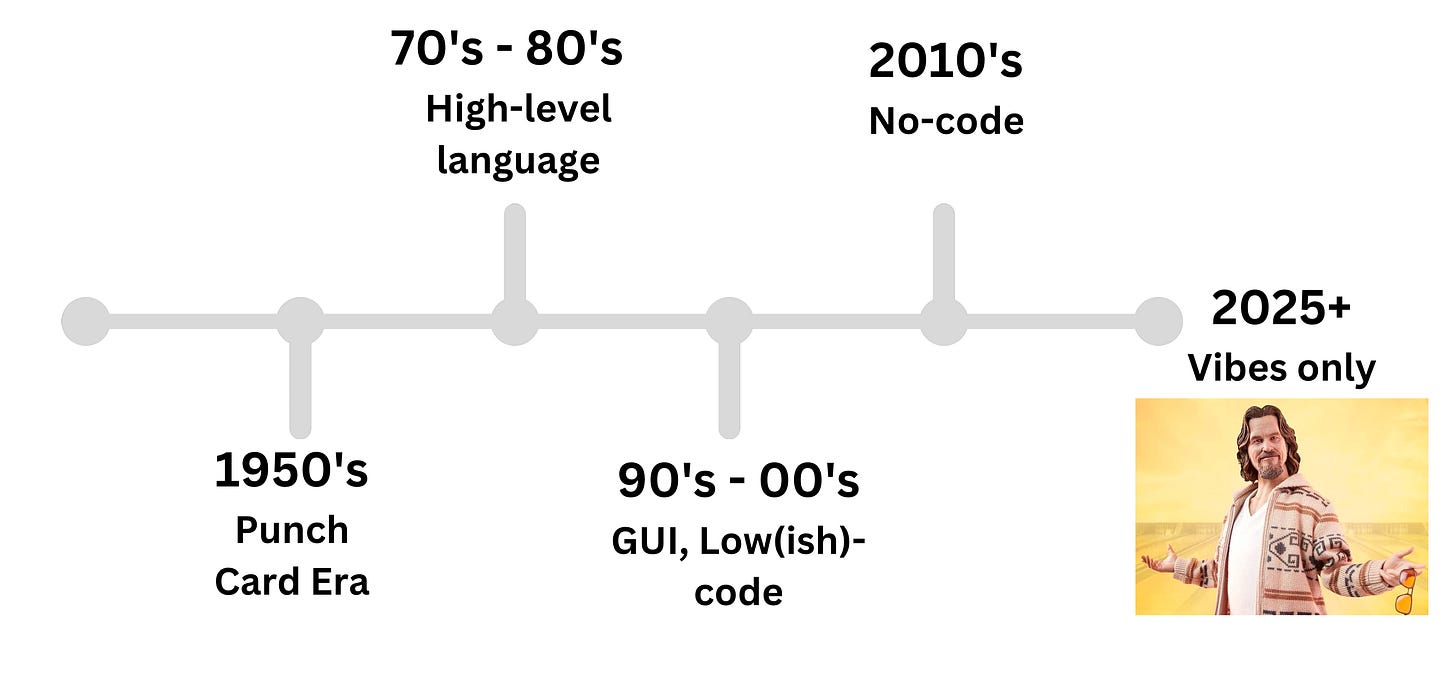

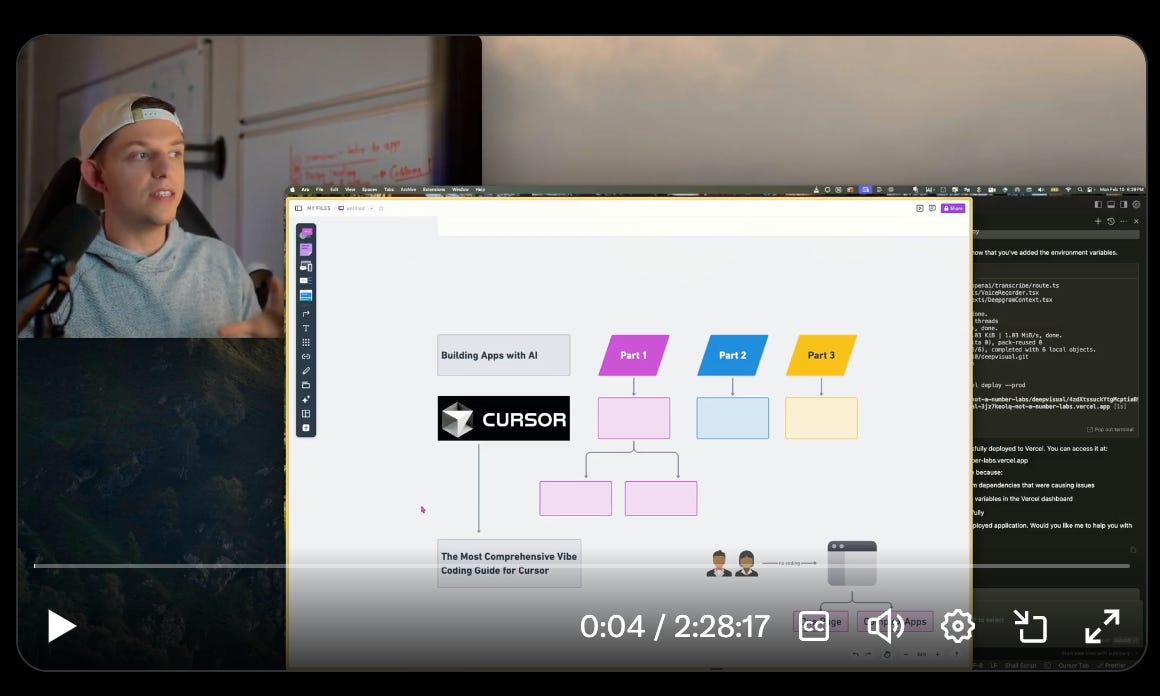
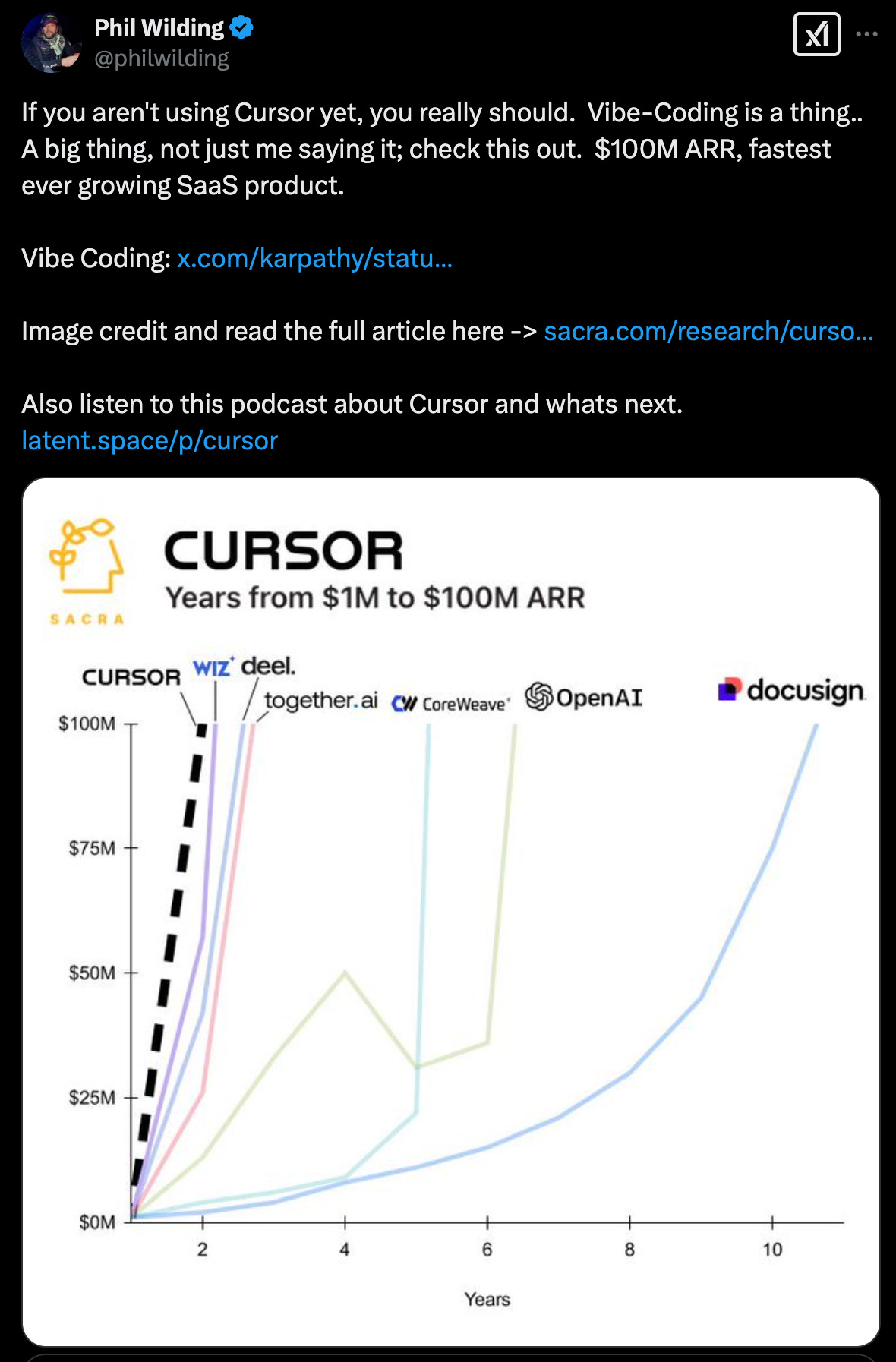

This post is amazing and deserves all the likes. I used to livestream old-school coding sessions but I got tired of it. I will 100% do vibe-coding livestreams now
Awesome article. Gives a glimpse & hope of what AI is capable of .